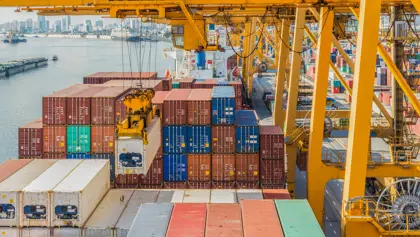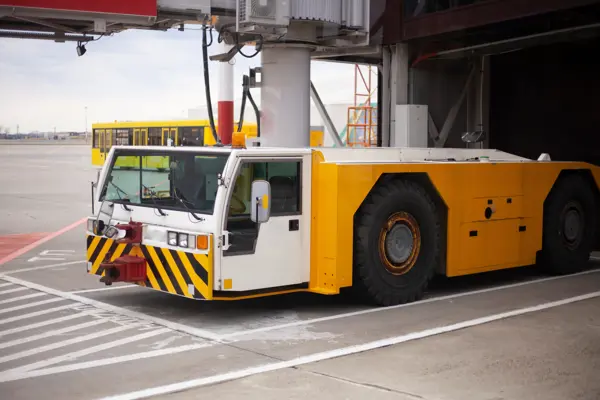Simular customer cases
ERP Migration at Terberg: 'This Is Not Just an IT Project'
In 2020, Terberg initiated the implementation of a new ERP system at its Hamburg branch. However, the process did not go as planned, leading to a temporary halt.

The manufacturer of distribution trucks, forklifts, and garbage trucks postponed the rollout to other Terberg entities. To achieve a successful company-wide ERP system, the approach and processes needed a significant overhaul, according to IT manager Marco de Hair.
Terberg operates in fourteen countries, with over three thousand employees, 32 subsidiaries, and an ERP landscape consisting of seven different systems, partly due to acquisitions. The company aims to standardize on Microsoft's Dynamics 365, but this presents a considerable challenge, especially given the presence of numerous legacy systems, including the custom package LIST (Logistics Information System Terberg), Baan ERP in Spain, and Avanti in England.

Harmonizing Processes
"We shouldn't simply discard what we have."
Within the corporate structure, individual units have a high degree of autonomy. De Hair explains, "That was a complex process; we shouldn't simply discard what we have; our local colleagues are our strength." However, it became increasingly clear that achieving a global ERP package also required harmonizing processes throughout the entire Terberg organization.
The subsidiary companies hold strong positions in their respective markets. Colleagues within these organizations have been working with clients and each other for years and have been successful in doing.
"To leverage all opportunities within the global Terberg organization, it's essential that not only the names on the signboard but also the processes and applications become more standardized."
External Consultants
De Hair adds, "We want to maintain entrepreneurship within the business units, but that also means they have their own ideas about processes and how they want to work. So, better collaboration between business and IT is needed."
Consultants from HSO are being utilized. They are active in all countries where Terberg has branches (Netherlands, England, France, Germany, Spain, and the USA). They are known for their "thorough project approach, excellent consultants, and knowledge of local laws and regulations," De Hair shares. Additionally, they work with local advisors who speak the language.
Business Process Owners
"IT's Teamwork introduced the concept of 'business process owners.'"
"When we began with the Dynamics implementation, we noticed that the decentralized nature of our company led to interactions with too many people from different companies, all bringing their own ideas about processes. It became very difficult to convey all these ideas to our IT team," De Hair explains. Subsequently, the concept of "business process owners" was introduced in collaboration with IT's Teamwork consultancy. This means that for each business unit, one domain expert is designated to gather the requirements for logistics, production, sales, etc. Within a team consisting of one consultant and a dedicated IT point of contact, "a manageable group" is formed.
The business process owner is typically a senior colleague within the business with an overview of the processes. They are assisted by a "stream lead," usually a senior colleague from the IT department who works closely with the business process owner, application specialists, and the product manager.

Power Platform
For example, colleagues from various departments, such as engineering, product configuration, and production, working in different locations across different countries, are discussing the exchange of knowledge. "We are delighted that we are accelerating our internal innovations with external partners. We will undoubtedly face more challenges, but we are on the right track," says De Hair.
He is also enthusiastic about the Power platform integrated with Dynamics 365. When asked for an example, he states, "An ERP application has many different screens. With the platform, you can create a single screen with relevant data that can also be fed back into the ERP system. This is especially important in the service sector: work orders, materials, hours, maintenance contracts, location (planner), everything is well-documented. Before you can send the invoice (in customer engagement, these are different screens), they are consolidated in the Power app."
"We let the IT expert within us guide us too much."
Hamburg
Reflecting on the challenging implementation in Hamburg, he says, "Looking back, we are aware that the setup was not right. We let the IT expert within us guide us too much and not the business and how they needed to work. As a result, an ERP system was created in which more steps were needed than necessary."
De Hair explains that in Hamburg, a subsidiary is responsible for maintaining Terberg's terminal tractors and coordinating technicians. "It involves a large group of service technicians, and it can be complex to get the materials needed to the right place."
Start Small
"You must focus on the most efficient way of working," he advises. "A partner will always say, 'start small and then optimize.' But paying attention to business processes and the most efficient way of working is what matters. Once you go live, processes must be in order."
The IT manager explains that the ERP system at the German port branch, for example, must support customers experiencing a breakdown. This includes supporting a technician who goes to the site in a service vehicle, needs to pick up parts, and may require parts to be delivered from the manufacturer. "Several steps in the system are required for this, such as scheduling and work orders, and so on."
Many Years Ahead
"Business process owners provide better insight into implementation timelines."
Thanks to the approach with business process owners, he now has better insight into the implementation timeline. A sales and service subsidiary will go live in the Netherlands in December, followed by a major production company in Spain in April 2023. "We will be busy for many years to come, migrating all 32 companies under Terberg to Dynamics 365."

How can we help you today?
Looking to learn more about how Terberg approached its transition to Dynamics 365? Leave a message below and we'll get back to you as soon as we can.
